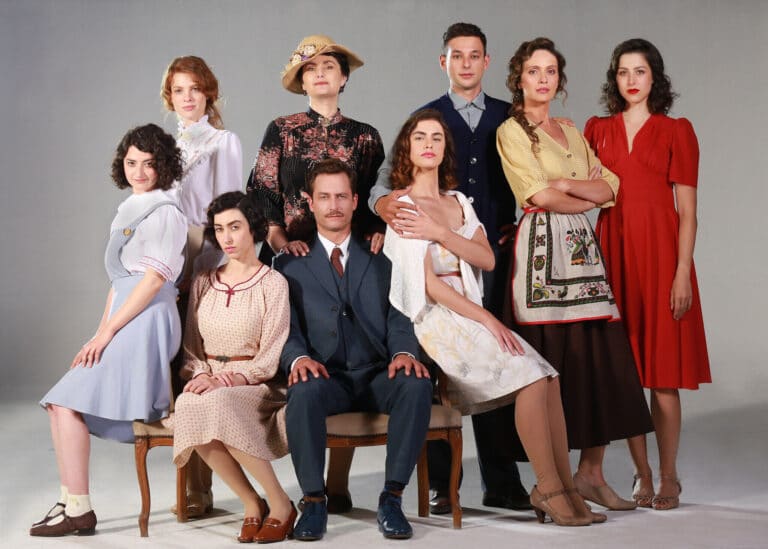
“The Beauty Queen of Jerusalem” returned to Netflix for its second season on July 14. The show follows four generations of Spanish Sephardic Jews, as their stories unfold against the backdrop of turbulent times in Jerusalem’s history.
The Netflix series takes viewers through the years of 1917 to 1949 — which comprised the end of the Ottoman Empire, the British Mandate and Israel’s War of Independence.
Here’s a guide to all the context and history behind the show.
Who are Sephardic Jews?
“Beauty Queen of Jerusalem” chronicles the lives of the Sephardic Ermoza family. Sephardim are Jews that come from the Iberian Peninsula (Spain and Portugal).
Until the late 15th century, Jews in Spain had established themselves within secular society. Many Jews were renowned poets, scholars and physicians.
In 1492, the Spanish government enacted the “Alhambra Decree,” which forced Jews to either convert to Catholicism or leave the country for good. Jews had only two options: Get baptized or escape.
Many of Spain’s Jews decided to stay and publicly become Christian. Some were determined to practice their Judaism in secret – they were called “marranos.” (Today, that’s generally considered a derogatory term.) The phrase “crypto-Jews” has become more acceptable.
In Hebrew, both groups are called anusim, which means “people who are forced to abandon their Judaism.” And in English they are known as conversos — literally, “people who converted.”
Nobody knows exactly how many Jews fled. Some historians think it was tens of thousands, though others think it could have been as many as one million.
Those that did flee went to Europe, North Africa and the Middle East. This was likely where the Ermoza family would fall.
Sephardic Jews have a unique culture, traditions and customs. Jews in the Iberian Peninsula spoke Ladino, a Judeo-Spanish language that blends medieval Spanish with Hebrew, Arabic, Portuguese and other influences.
Ladino is only spoken by a few hundred thousand people today, and the language is especially rare in TV and movies. You can hear smatterings of the centuries-old language throughout “Beauty Queen of Jerusalem.” (Read 13 essential Ladino words and phrases)
In the series, we also see tensions that exist between Ashkenazi (Eastern European) and Sephardic Jews. We won’t get into the roots of that cultural conflict, which exists to a much smaller extent in the present-day Jewish community.
What was life like for Jews under the Ottoman Empire?
“Beauty Queen of Jerusalem” first takes place against the backdrop of Jerusalem at the end of the Ottoman Empire.
Fleeing the massacres and forced conversions of Christian Europe in the Middle Ages, tens of thousands of Jews found a new safe haven in the Ottoman Empire joining other Jewish people who have been living there for centuries.
For the next few hundred years, the Muslim-run empire became home for Ashkenazi and Sephardic Jews alike. Though relegated to second-class citizens called “dhimmis,” Jews brought with them useful skills in medicine, finance and trade, and flourished.
Over time, the Ottoman Empire began to crumble. Again, the Jews faced antisemitism and suffered from poverty and violence. By the end of the 19th century, when “Beauty Queen of Jerusalem” takes place, it was clear that the safe haven of the Ottoman Empire was no longer safe.
Life during the British Mandate
Modern-day Israel was colonized by the British, in what was called the British Mandate of Palestine, from 1923 to 1948.
Life under the British Mandate wasn’t simple for Jews. In fact, Israeli historian Hillel Cohen makes a strong argument that this time (the year 1929, specifically) was the genesis of the Arab-Israeli conflict. This was the year that long-bubbling Arab resentment and fear of displacement burst into open, bloody revolt. It was the moment where both Jews and Arabs began to violently distrust the other, each building a narrative in which they and they alone are the victim. (More on the question of when the Arab-Israeli conflict started.)
During this time, in the early 1920s, Jewish Socialist Zionists established the Haganah, an underground militia to protect Jewish neighborhoods from spreading violence. Fighters were instructed to only defend Jewish communities and to not incite violence against the Arabs or the British.
But some commanders protested this policy of restraint. These disagreements caused other militia groups to form, and eventually resulted in intimidation, violence and even assassinations and bombings. (More on Pre-IDF Brigades: Haganah, Irgun and Lechi.)
In “Beauty Queen of Jerusalem” we see these tensions take shape as the characters live through this difficult and complex part of history.
Have you watched ‘Beauty Queen of Jerusalem’ yet? Let us know what you think on Instagram, Twitter, and TikTok!
Originally Published Jun 1, 2022 12:05AM EDT


